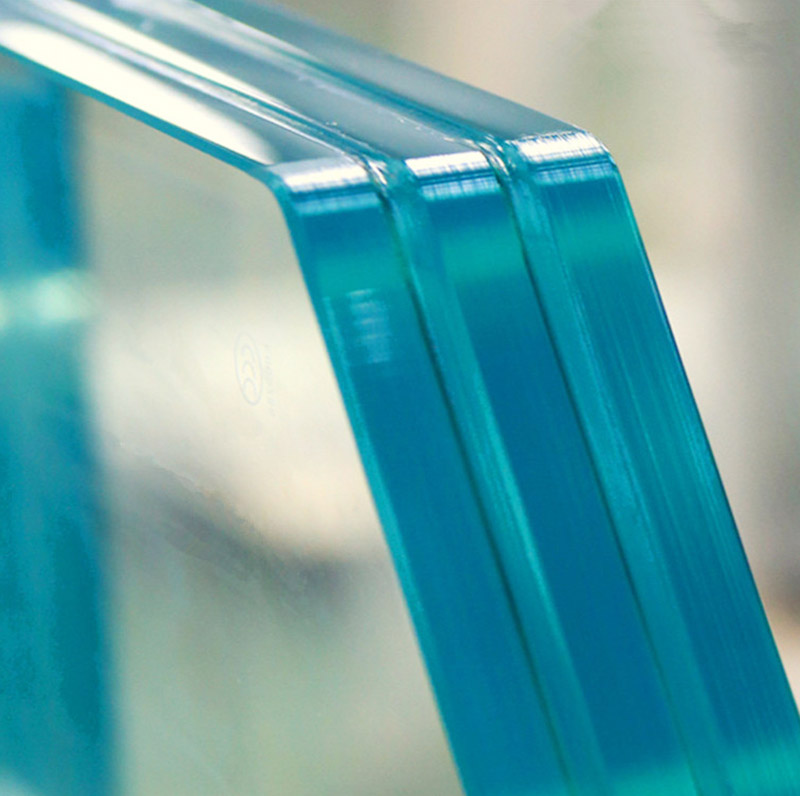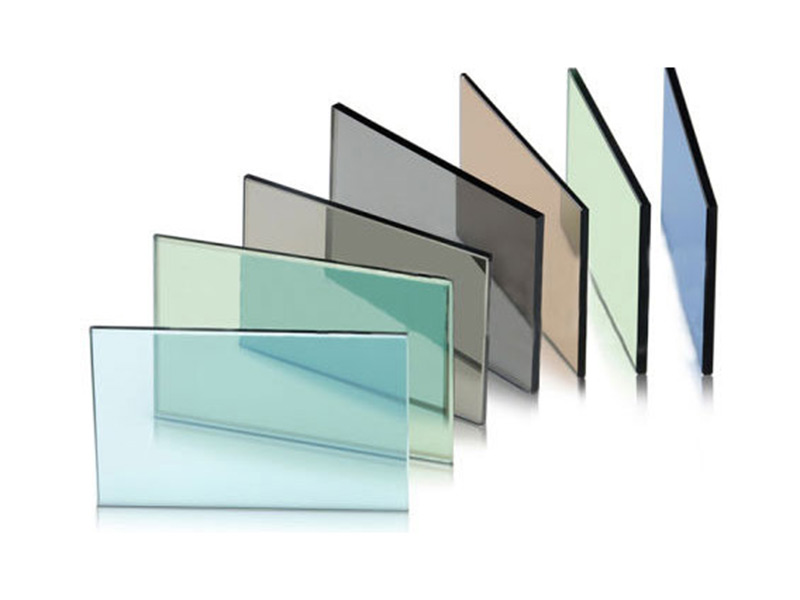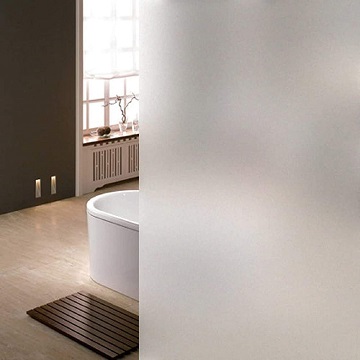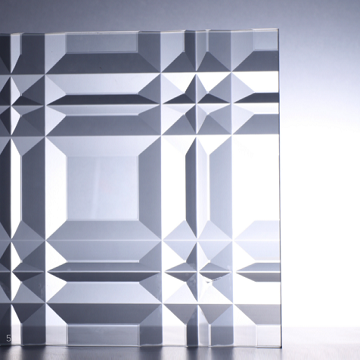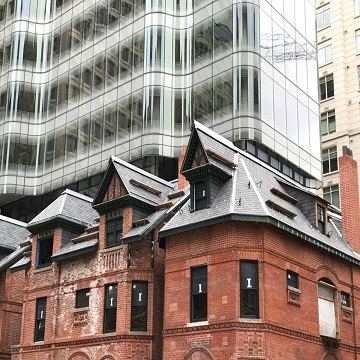Glass and Thermal Stress

Thermal Stress is created when one area of a glass pane gets hotter than an adjacent area. If the stress is too great then the glass will crack. The stress level at which the glass will break is governed by several factors. Tempered glass is very resilient and not prone to failing due to thermal stress. Laminated glass and annealed glass behave in a similar way. Thicker glasses are less tolerant. Glass containing wire is more vulnerable. The edge quality of the glass can play a part. Glass with damaged edges will take less stress than clean cut glass. A good clean cut edge is the best finish along with fully polished edges. Ground edges and arrissed edges may not be as good. A ground or raised edge is a series of small defects around the glass. The effect brings all the defects to an average level and may at best be only more predictable than a glass with more random damage.
The temperature difference for a location can be calculated and breakage due to thermal reasons eliminated. To assess the thermal risk the following information should be identified:
--Location of the building
--Orientation
--Type of glass being used including details of the insulating glass units
--Size of building overhang if present
--Size of mullion and transom caps if present
--Details of any back up i.e. where a panel makes up a level to a floor or ceiling behind the glass allowing hot air to be trapped and reflecting back at the glass
--The framing material including thermal breaks and frame color
--The window size and if it opens. I.e. changes the angle to the sun
--Details of internal heating systems
--Any other details like other buildings or trees casting a shadow onto the glass
During the year the sun changes its path through the sky. If the glass in a building is subject to excess thermal stress it would be expected to have problems in its first year of use. The most challenging periods are in spring and autumn when the sun angles are low and the nights are cold. Midsummer the edges of the glass will be warmer anyway and the sun's path is more directly overhead putting less direct heat into the glass.
Glass and Human Impact
Glass in its annealed form, framed and intact is not an immediate threat but when it is broken the long shards turn into effective cutting devices with sharp edges and momentum. Fortunately glass can be modified to change these properties and reduce the risk of injury dramatically. There are standards and codes of practice that state where impact resistant glass must be used but the list of locations is not exhaustive. Anywhere where there is a risk of human contact should be evaluated for the potential risk of breaking glass.
Generally glass is considered a risk in areas of low level glazing and in and around doors. The risk locations are the areas where accidental damage may cause the glass to break. Another risk area is where glass may be loaded to a high level due to the pressure applied by bodies as in the case of glass floors and barriers. In floor and barrier locations the contact with the glass will be predicted rather than by accident. A further area of interest is overhead glazing where the integrity failure of glass may have dire consequences unless the glass is modified.
The most frequently used glass used to improve personal safety is tempered and laminated glass products. Rarely do we suggest a combination of tempered and laminated glass because it can show undesirable characteristics of both glasses.
Tempered glass achieves its impact resistance by having the strength increased by a factor of 4 and when it breaks it collapses into small relatively harmless particles.
Laminated glass is no stronger than the annealed glass it is formed from but the interlayer bonds the panes together. The bonded panes resist penetration and holds the broken panes together reducing the risk of harm.
Glass and Explosions
Glass that is able to protect an area from an explosive force is not new but has become a familiar requirement for the age we live in. Like fire resistance and manual attack the glass has to form part of a complete system and will not perform as required in isolation. Glass can be tested to the North American and European standards below.
ASTM F1642: Test method for glass and glazing subjected to air blast loadings
EN 13541 : 2000 : 'Glass in building - Security glazing - Testing and classification of resistance against explosion pressure'
Subject to blast waves generated using shock tube
Simulation of high explosive detonation
4 classifications (ER1, ER2, ER3 and ER4)
S (Splinters) or NS (No splinters)
The selection and application of blast resistant glass needs specialist advice and there are consultants who offer advice in this area. Like most threats it can be hard to determine the size of the explosion and the proximity to your location. The channeling effect of other buildings and street architecture can change the way the pressure wave effects buildings. Post examination of explosions can reveal some odd results. Unprotected buildings further away can sometimes have more damage than more immediate buildings. Although there is a pressure wave the result is glass being pulled out of buildings rather than being pushed in. Once the initial pressure wave of air has hit the building there is a vacuum left where the air has been violently moved out of position. It is the suction effect that can pull the glass outwards.
A common design is to use an outer pane of toughened glass and a fairly slim pane of laminated glass to the inside. The flexibility of the glass allows the energy to be absorbed even though the glass may break. It is important that the glass remains in its frame rather than becoming part of the problem. To make the glass stiffer can result in the energy being imparted to the frame or the building structure. Structural failure of the building is far worse that losing the glass panes.
Glass Strength
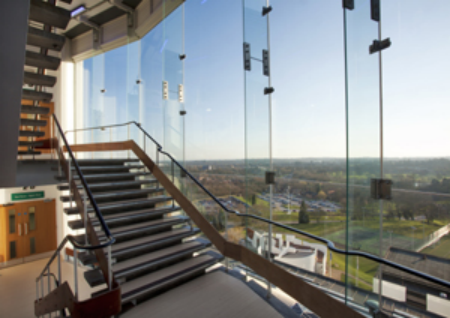
Glass is not like other products used in buildings. It is clear, fairly rigid providing a lot of strength but can be brittle as well. At an atomic level, glass is a network of silicon and oxygen bonds modified randomly by sodium. The structure is not regular as it would be if it were liquid. The network of bonds prevent the glass from being ductile. The ingredients for glass are not transparent and it is the melting of these products that creates new bonds. As the glass cools the ingredients are locked together before they can resume their original structures.
The strength of glass is determined by putting the glass under stress until it breaks. The surface strength is measured using a ring and the edge strength by 4 point bending. The test is repeated to derive a distribution for the break strength. Even with glass taken from the same plate it cannot be assumed that the glass will break at exactly the same load. The distribution of the range of test results is expressed by the Weibull modulus. From this we know how predictable the glass strength is and how strong the weakest sample was. We then have data for the glass properties that we can use to compare both stress and deflection for a given load.
There are processes that increase the strength of glass. Tempered glass takes the glass to a temperature where it becomes flexible again and then it is chilled evenly and rapidly. The outer surface is chilled quicker than the inner glass. Because the core is trying to contract and the outer surfaces are already chilled the outer surface is being compressed while the core is under tension. The compression at the surface is pulling the glass together so any flaws are being closed rather than being free to open. It is only when the compressive strength is overcome that the glass will fail. The energy stored in the glass is released and the glass breaks in the characteristic form of toughened glass. Toughened glass is predictably 4 times stronger that annealed glass of the same thickness.
Durability of Glass
The durability of glass can be witnessed in most cities with ancient churches. Unless broken by excessive loads glass will remain for very long periods. The glass may be pitted by the weather but still it provides service through the centuries of use. The early producers of glass treated the production like alchemy but modern glass is fairly uniform and the properties governed to provide consistent performance in use. Apart from mechanical stress there are only a few factors that damage glass.
Abrasion can cause glass to scratch and remove any exposed applied coatings. Sand borne in the wind may be a natural phenomena but it is rare for this to cause major damage. Most examples of damaged architectural glass is the effect of handling, up to and including glazing and thereafter, following trades. Unless the glass surfaces are protected the final clean down can reveal deposits from cement and plaster products. The attempted removal of the products with scrapers or grit being picked up in cleaning cloths can cause abrasion.
Chemical attack is also not a common natural event. Clean fresh water is not a threat to glass but acid rain may have a long term effect. Glass is good at resisting most acids with short term exposure. Alkaline products can attack the chemical composition of the glass surface. Alkalines are found in cements and so the contamination of the glass during the building may lead to damage unless it is immediately removed. The water runoff from new brick work or concrete across glass may also contain enough alkaline chemicals to cause attack manifested by streaking on the glass surface.
Pitting of glass can be caused by weld splatter from tools used on building sites. The hot particles either fuse into the surface of the glass or fall off leaving a dimple. Old glass i.e. pre modern volume production may show signs of pitting due to years of exposure to water. The chemical constituents of glass have to strike a balance between the required properties of the product - resistance to chemical attack, strength, melting temperature and hardness (workability).
Under the section on strength of glass we discuss its unusual properties. In terms of mechanical strength the durability can be variable. The theoretical strength of glass is extremely high but we are unable to realize the full strength. From the moment that glass is made it is handled by machinery etc. That effects the surface of the glass in a way not visible to the eye alone. Minor flaws on the surface allow stress to concentrate so under load the glass will break from an imperfection. The lack of resistance to a break means the crack can grow until it is obvious. In our calculations we allow for the impact of the flaws and design around the lowest strength.
The factors affecting glass strength and therefore durability are:
Size
The larger the piece of glass the chances of finding a critical flaw increase.
Mechanical loading rate
Glass can withstand loads applied at rapid rates better than the same load applied over a longer period. Glass suffers from stress corrosion. At the tip of a flaw in the glass there can be a chemical reaction with the atmosphere. The moisture in the air reacts with the sodium to sharpen the crack tip. With a sharper crack tip the stress is concentrated increasing the risk of failure. The potential for stress corrosion is related to the time it is exposed to the load. Fortunately, the relationship is predictable and calculable using the stress corrosion constant.
State of stress
Glass with holes and notches create localized areas where stress is greater under load. Where these features are necessary in glass it is important to have a radius in the corners to try and reduce the stress concentration.
Temperature changes
Anyone who has plunged a glass into very hot water may recognize that glass does not like sudden temperature changes. It is surprising how hot glass can get in service. Solar control glass with high absorptancy rates can get hot very quickly when exposed to the sun. It is not the absolute temperature that the glass reaches that can create a problem. With modern glazing materials and even some old ones the glass at its edges can remain from overnight quite cold compared to the center of the glass. A rising sun at a low angle can heat the glass at the center before the edges can catch up. Design features like overhangs or even adjacent buildings can throw shadows across the glass adding to the potential problem. The hot glass tries to expand while the cold glass around the edges is not expanding. The stress created around the edge can lead the glass to crack. It is the temperature difference from one area to another that is the critical factor. Once the crack has started it often meanders across the face of the pane because the initial high stress has been relieved.
Surface and edge finishes
Applying finishes to the glass alters the surface and can change the frequency of occurrence of critical flaws. The edge of the glass is prone to damage often in a more visible way and can lead to stress concentrations.
Supplier Of Toughened Glass In China:
Wallkingdon Glass offers not only one of the broadest selections of architectural, decorative, and specialty glass, but we also offer services that allow our clients to do more with glass. If you want to get high quality glass and the cost effective solutions while keeping quality to highest level, send an email to enquiry@wallkingdonglass.com, we will have the valuable input and creativity of glass design experts to help you.


